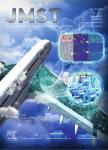Long-term deterioration of lubricant-infused nanoporous anodic aluminium oxide surface immersed in NaCl solution
Long-term deterioration of lubricant-infused nanoporous anodic aluminium oxide surface immersed in NaCl solution作者机构:Beijing Advanced Innovation Centre for Materials Genome EngineeringInstitute for Advanced Materials and TechnologyUniversity of Science and Technology BeijingBeijing 100083China Department of Materials and ChemistryResearch Group Electrochemical and Surface EngineeringVrije Universiteit BrusselBrusselsBelgium Department of Materials Science and EngineeringDelft University of TechnologyDelftthe Netherlands
出 版 物:《Journal of Materials Science & Technology》 (材料科学技术(英文版))
年 卷 期:2021年第64卷第5期
页 面:57-65页
核心收录:
学科分类:080503[工学-材料加工工程] 0806[工学-冶金工程] 0817[工学-化学工程与技术] 08[工学] 0805[工学-材料科学与工程(可授工学、理学学位)] 0703[理学-化学] 0802[工学-机械工程] 0702[理学-物理学] 0801[工学-力学(可授工学、理学学位)]
基 金:supported by the National Key Research and Development Program of China(No.2016YFE0203600) the National Natural Science Foundation of China(No.51771029) the Beijing Nova Program(Z171100001117076) the 111 Project(B17003)
主 题:Lubricant-infused surface Anodic aluminium oxide Deterioration EIS
摘 要:This study investigated the deterioration of a lubricant-infused anodic aluminium oxide surface in a 1M NaCl solution for~200 *** observation by cryo-SEM and quantitative analyses by UV spectroscopy and EIS revealed that the long-term deterioration of the lubricant-infused surface was divided into two stages:the surface-adhered lubricant layer gradually dissolved at a constant rate until the substrate was exposed;afterwards the lubricant infused in the nanochannels began to diffuse and was depleted after~200 *** EIS results also revealed that the defects reduced the corrosion resistance of the lubricant-infused surface considerably.



